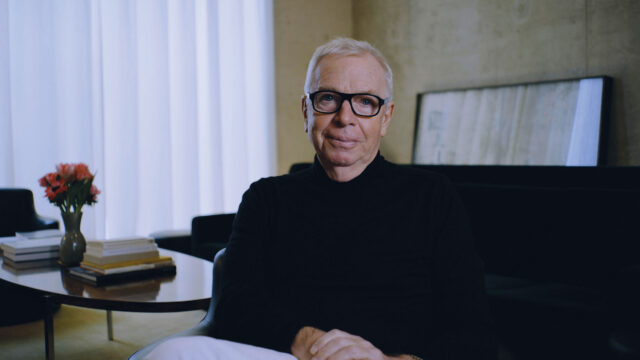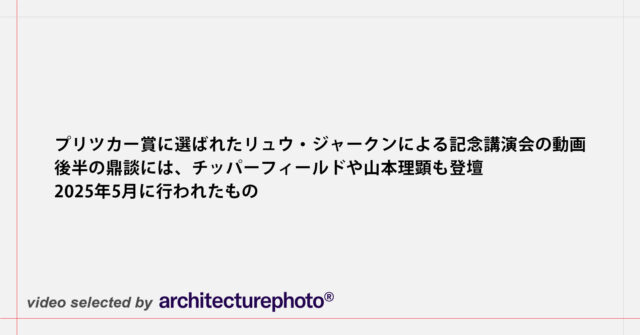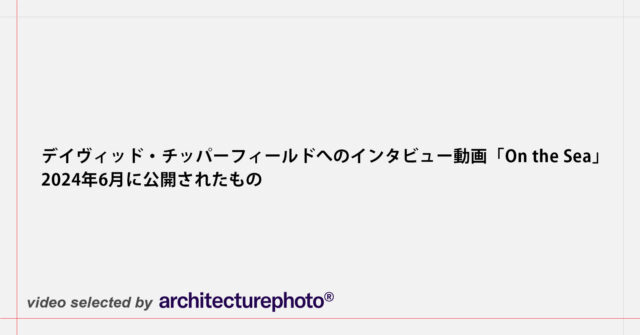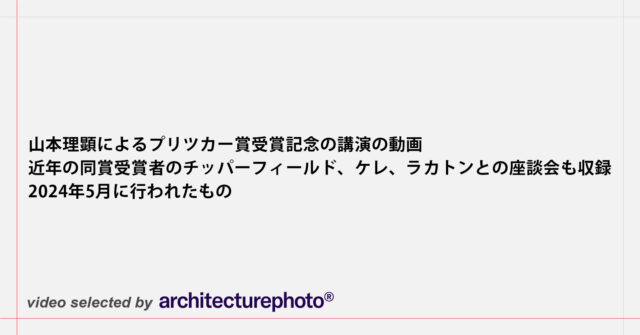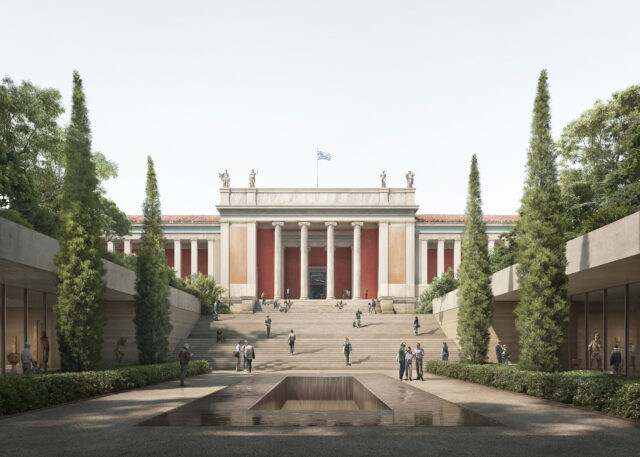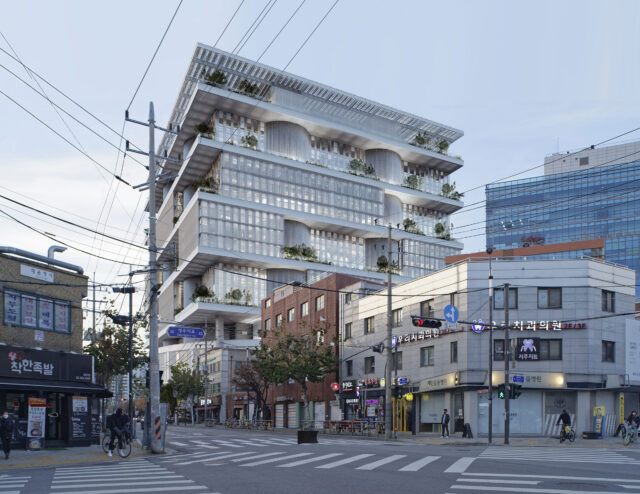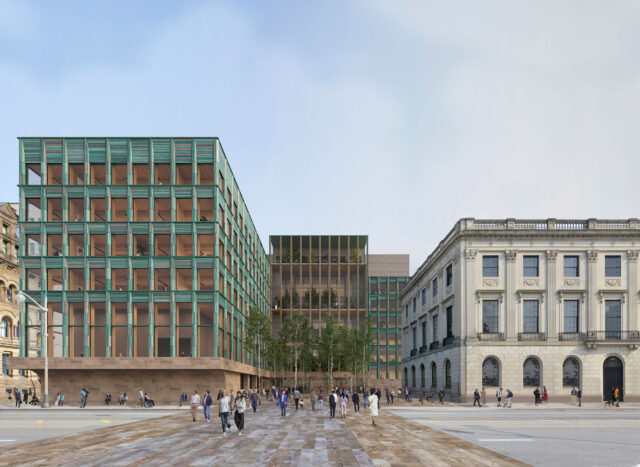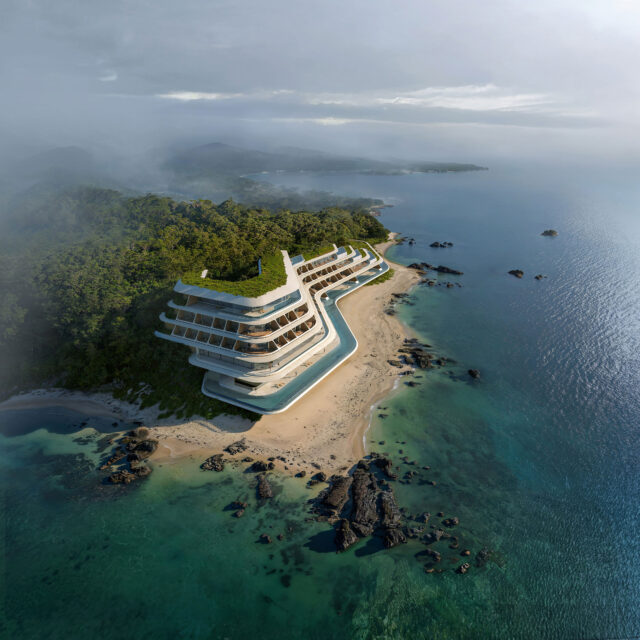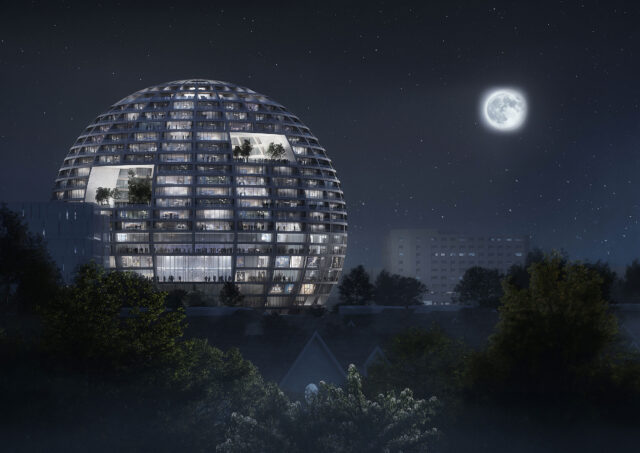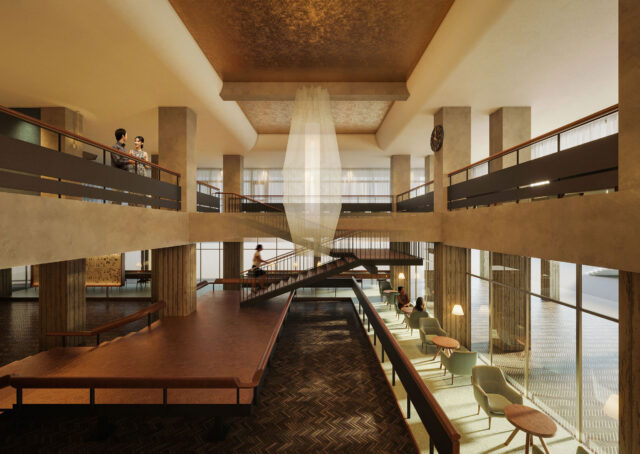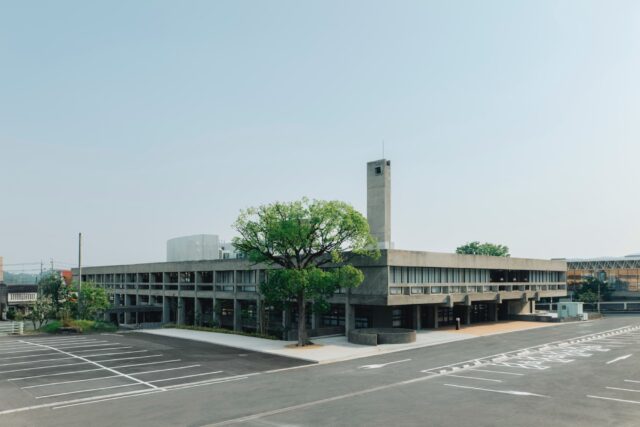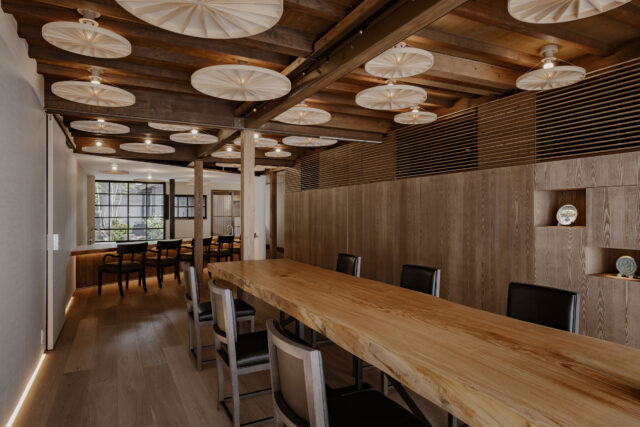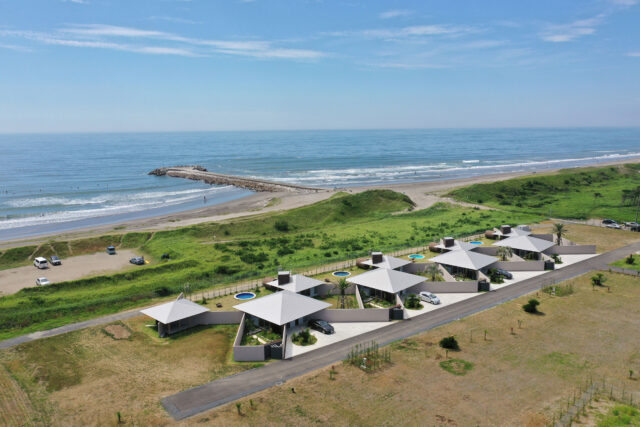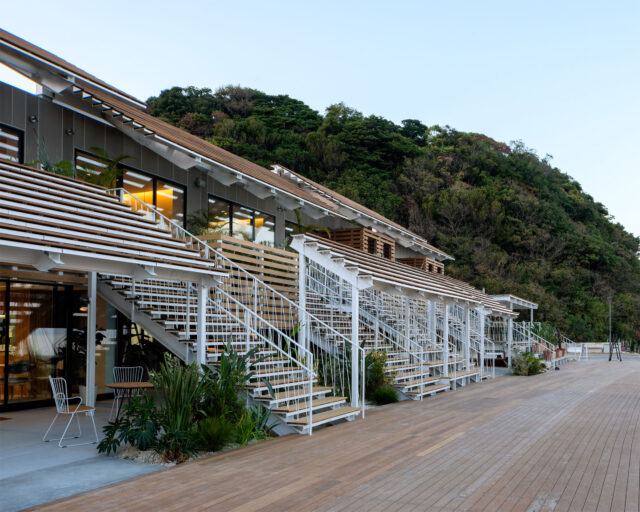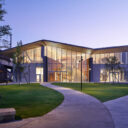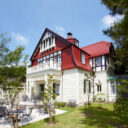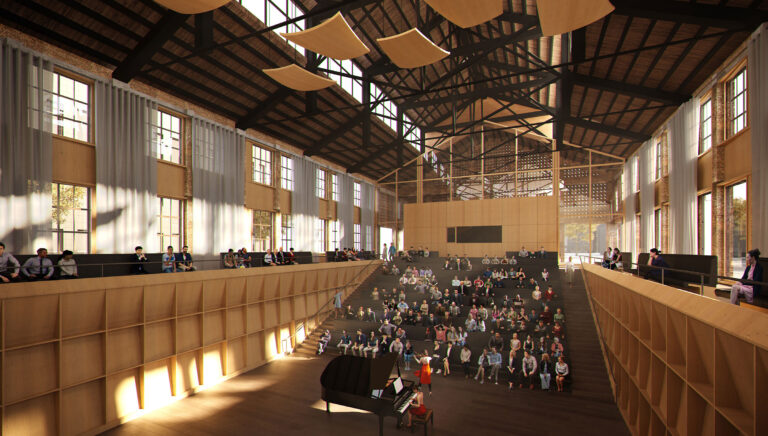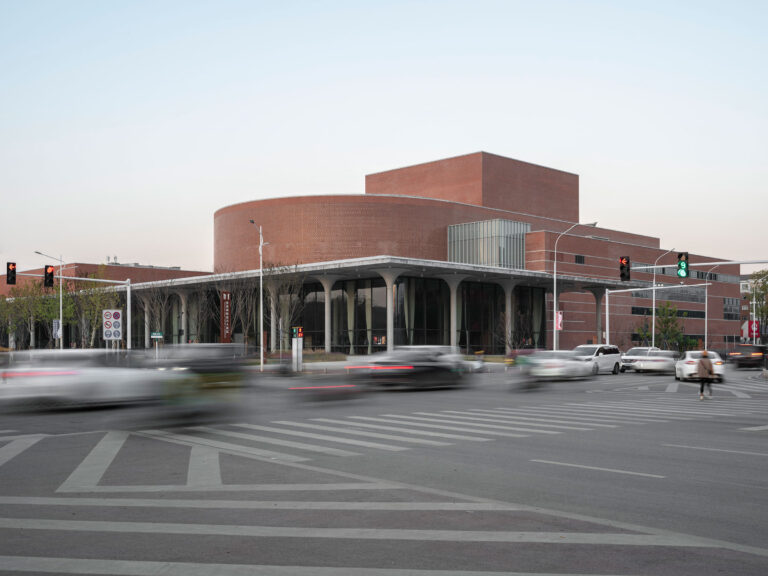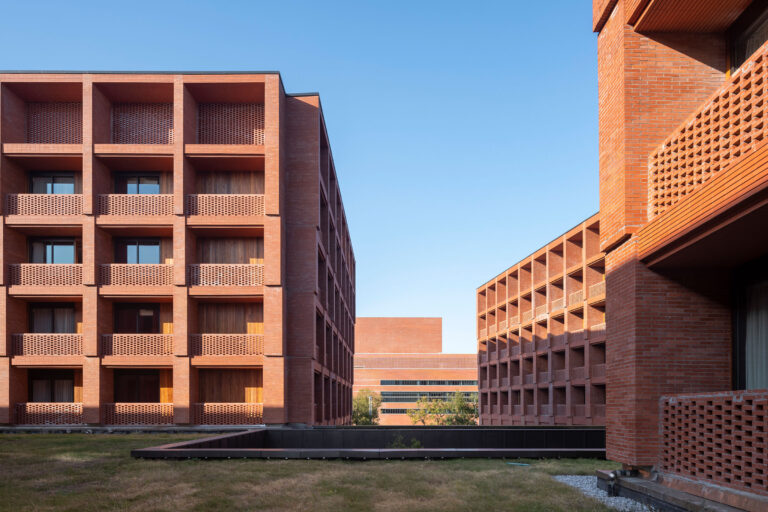
SHARE デイヴィッド・チッパーフィールド・アーキテクツによる、中国・景徳鎮のホテル。地域産業である磁器工場跡地の開発計画の一環として建設、3つのホテルとイベント会場を独立した4つの建物に配置した上で地上階を繋ぎ公共的空間も確保、周囲と調和する煉瓦素材で外観をつくる



デイヴィッド・チッパーフィールド・アーキテクツ・ベルリン&上海による、中国・景徳鎮のホテル。
地域産業である磁器工場跡地の開発計画の一環として建設、3つのホテルとイベント会場を独立した4つの建物に配置した上で地上階を繋ぎ公共的空間も確保、周囲と調和する煉瓦素材で外観をつくる計画です。また全体のマスタープランもデイヴィッド・チッパーフィールド・アーキテクツが手掛けています。
こちらは建築家によるテキストです
グランドシアターと音楽アカデミーの間に位置し、景徳鎮の新しい文化地区の中心にあるホテルコンプレックスです。この複合施設は、4つ星ホテル、5つ星ホテル、イベント会場の4つの独立した建物で構成されています。広々とした軽量鉄骨の構造体は、地上階で各ビルをつなぎ、さまざまな公共活動のための共同スペースを作り出しています。
各ホテル棟には中庭があり、個別に造園された庭は、隣接するホテルの廊下からパンチングレンガの壁を通して見ることができ、帰属意識、静寂、方向性を伝えています。大通りに隣接する2棟のうち南側の建物には、さまざまなパブリックイベントに対応できる格調高いファンクションルームがあります。1960年代に建てられた元寮の建物を保存し、アパートメントビルとしてホテルを補完するために複合施設に組み込んでいます。
歴史的な工場の建物を参考に、ホテルのファサードには地元の建築材料であるレンガを主に使用し、周辺地域とシームレスに調和するようにしました。ファンクションルームの半透明なファサードとホテルのバルコニーのパンチングバルブレードは、プライベートエリアとパブリックエリアの間のフィルターとして機能しています。千鳥格子のレンガの柱は、建物全体のボリュームをヒューマンスケールに近づけています。
以下の写真はクリックで拡大します














マスタープランについて
以下の写真はクリックで拡大します



景徳鎮の都市遺産には、20世紀中頃の磁器生産に関わる大規模な工場跡地が含まれています。第一期工事では、敷地西側の既存建物を改修し、都市構造の中で賑わいのある公共の場として整備しました。博物館、陶磁器店、陶磁器市場などの新たな機能を持ちます。また、博物館、陶磁器店、陶磁器市などの新たな機能により、過去の産業とのつながりを形成しています。第2期工事では、東側の敷地を、大学や公演会場、さらなるインフラを備えた舞台芸術のためのキャンパスに変貌させます。デイヴィッド・チッパーフィールド ベルリン・アーキテクツは、この地域のマスタープランを作成し、既存の建物を保存して再利用するだけでなく、新しい建物によって都市部を補完し、より広い都市の文脈の一部として現代的な存在感を獲得しています。
旧生産拠点の中心を貫くプロムナードと、その西側に位置する大通りは、この地域を南北に開放しています。この大通りに沿って、北側には2つの会場を持つ大劇場、南側にはホテルや図書館などの新しい公共建築が配置され、街の新しいランドマークとして定着しています。新しい建物は、歴史的な工場のスペースにある文化施設を補完するものです。また、これらの公共施設に加え、店舗や住宅も用意されています。学生寮もあります。
この都心型キャンパスの公共性は、主に工場の地上階を開放することで生み出されています。工場棟の地上階を一般に開放し、屋外のパブリックな空間を室内にまで拡大することで 屋外空間を内部に拡張しています。その物理的な存在感と歴史的な関連性から、この地域の磁器生産において この地域の磁器生産の歴史的な関連性から、既存の工業用建物はこの地域にアイデンティティと意味を与えています。この地域にアイデンティティと意味を与えている。従って、その保存と継続的な利用は、このマスタープランにとって不可欠なものです。マスタープラン全体にとって不可欠なものです。
Ceramic Art Avenue Taoxichuan Masterplan
Situated close to the city centre, the urban heritage of Jingdezhen includes an extensive area with large factory buildings from the local porcelain production in the middle of the 20th century. In a first project phase, the existing buildings in the western part of the site were refurbished and developed to become a lively and public place within the urban fabric. With new functions such as a museum, porcelain shops and a ceramics market, the area forms a connection to its industrial past. In a second project phase, the eastern site is transformed into a campus for the performing arts with colleges, performance venues and further infrastructure. David Chipperfield Architects Berlin developed a master plan for this area, not only preserving and converting the existing buildings for re-use, but also complementing the urban quarter with new buildings to gain a contemporary presence as part of the broader city context.
A pedestrian promenade leading through the centre of the former production site and a boulevard to its west open up the area in north-south direction. Along the boulevard, new public buildings are placed such as a Grand Theatre with two venues to the north and a hotel complex and library to the south, establishing the campus as a new city landmark. The new buildings complement the cultural institutions housed in the historic factory spaces, such as the music academy at the heart of the campus. In addition to these public uses, shops and residential buildings are also provided, including student accommodation.
The public character of the inner-city campus is primarily generated by opening the ground levels of the factory buildings to the general public, extending the public outdoor space into the interior. Due to their physical presence and historic relevance for the local porcelain production, the existing industrial buildings give identity and meaning to this area. Their preservation and continued use are therefore essential for the whole master plan.
HOTEL
Located between the Grand Theatre and the Academy of Music, the hotel complex is at the centre of Jingdezhen‘s new cultural district. The complex consists of four separate buildings with a four-star hotel, a five-star hotel and an events venue. A spacious light steel structure connects the buildings at ground level creating communal areas for various public activities.
Each of the hotel buildings contains an inner courtyard with an individually landscaped garden, which can be seen from each of the adjoining hotel corridors via a perforated brick wall, conveying a sense of belonging, tranquility and orientation. The more southerly of the two buildings directly adjoining the boulevard holds prestigious function rooms for a diverse range of public events. A former dormitory building from the 1960s was preserved and integrated into the complex to complement the hotel as an apartment building.
With reference to the historic factory buildings, bricks are primarily used as the local building material for the hotel façades, which thus blend seamlessly into the surrounding area. The semi-transparent façades of the function rooms and the perforated balustrades of the hotel balconies act as a filter between private and public areas. The staggered brick columns bring the overall building volume in relation to the human scale.
■マスタープラン概要
Concept study: 2018
Gross floor area: 265,000 m2
Client: Jingdezhen Ceramic Culture Tourism Group
Architect: David Chipperfield Architects Berlin
Partners: David Chipperfield, Martin Reichert, Alexander Schwarz (Design lead)
Project architect: Ulrike Eberhardt, Franziska Rusch
Project team: Noriyuki Sawaya, Kawalpreet Singh; Graphics, Visualisation: Konrad Basan, Kerstin Bigalke, Dalia Liksaite
■建築概要
Concept study: 2018
Project start: 2020
Construction start:
Completion: 2021
Opening: 2021
Gross floor area:91,700 m2
Client: Jingdezhen Ceramic Culture Tourism Group
Architect: David Chipperfield Architects Berlin & Shanghai
Partners: David Chipperfield, Libin Chen, Martin Reichert, Alexander Schwarz (Design lead)
Project architect: Ulrike Eberhardt (Concept Design), Anke Lawrence (Concept Design), Xu Yang (Schematic Design to Artistic Site Supervision)
Project team: Fang Cui, Stefano Didaniel, Weimiao Li, Rongxing Lin, Haoran Lyu, Rosa Piepoli, Juliane Schwarz, Ziyang Xu, Hanyu Zheng
───
In collaboration with
Local design institute: ISA Architecture, Shanghai
Landscape architect: Possibilism Design Studio, Shanghai (Concept Design to Design Development), ISA Architecture,Shanghai (Construction Documentation to Site Supervision)

